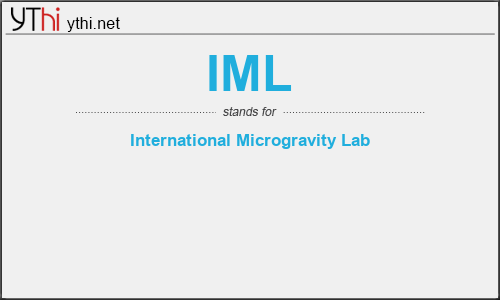What does IML mean? What is the full form of IML?
The Full Form of IML is International Microgravity Lab.
This week in 1992, the First International Microgravity Laboratory, IML-1, module launched aboard space shuttle Discovery. IML-1, which was managed by NASA’s Marshall Space Flight Center, was the first in a series of missions with payloads dedicated to life science and microgravity science research. The primary objective of the mission was to conduct science and technology investigations that required the low-gravity environment of space, with emphasis on experiments that studied the effects of microgravity on materials and processes and living organisms. Today, Marshall’s Payload Operations Integration Center serves as “science central” for the International Space Station, working 24/7, 365 days a year in support of the orbiting laboratory’s scientific experiments.
The NASA History Program is responsible for generating, disseminating, and preserving NASA’s remarkable history and providing a comprehensive understanding of the institutional, cultural, social, political, economic, technological, and scientific aspects of NASA’s activities in aeronautics and space. For more pictures like this one and to connect to NASA’s history, visit the History Program’s webpage.
The First International Microgravity Laboratory (IML-1) with its international payloads dedicated to life sciences and microgravity science research was conducted from January 22 to 30, 1992. The primary objective of the IML mission was to conduct science and technology investigations that require the low-gravity environment of space. As a cooperative effort which involved more than 200 scientists from 14 countries, coordination of science was a major activity. Science priorities which satisfied both life science and microgravity science mission goals were balanced within and among payload elements depending upon available mission resources such as time and crew availability. The scientific results to date have been excellent and show the benefits of experimentation on Spacelab.
IML
means
International Microgravity Lab![]()
Translate International Microgravity Lab to other language.


Leave a Reply
You must be logged in to post a comment.